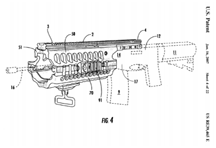When Can a Company That Hires its Competitor’s Former Employee Be Sued in Federal Court?
Guest post by Maxwell Goss. Dr. Goss is a business litigator with Rossman Saxe, P.C. in Troy, Michigan. His practice focuses on non-compete, trade secret, intellectual property, and shareholder law and litigation.
The Defend Trade Secrets Act (DTSA) was enacted a year ago, on May 11, 2016. One of the most sweeping changes in intellectual property law in recent years, the statute creates a private cause of action for trade secret misappropriation under federal law.
For trade secret owners, the advantages of the DTSA include access to nationwide discovery and enhanced remedies such as ex parte seizure of property to prevent propagation of stolen trade secrets. For those accused of trade secret theft, the DTSA provides substantial protections including strict limitations on the injunctive relief available and entitlement to a hearing no later than seven days after a property seizure.
An open question has been the status of the controversial “inevitable disclosure” doctrine under the DTSA. Under state law in some jurisdictions, courts will enjoin a company’s former employee from working for a competitor if the company establishes that the employee would “inevitably” use its trade secrets in his or her new position. Trade secret owners like the doctrine of inevitable disclosure because actual misappropriation can be hard to prove. At the same time, the doctrine has been criticized as effectively allowing courts to impose a non-compete on someone who never signed a non-compete agreement.
How does inevitable disclosure fare under the DTSA? The statute provides that an injunction to prevent misappropriation may not “prevent a person from entering into an employment relationship,” and that any conditions placed on a person’s employment in an injunction must be based on “evidence of threatened misappropriation and not merely on the information the person knows.” In light of this language, some have concluded that the inevitable disclosure doctrine is a dead letter under the DTSA.
But a recent court opinion indicates otherwise. Interestingly, the opinion was issued on May 11, 2017, the one-year anniversary of the DTSA, by the United States District Court for the Northern District of Illinois, a federal court in the Seventh Circuit, where inevitable disclosure was first definitively recognized. In Molon Motor and Coil Corp. v. Nidec Motor Corp., the plaintiff, a maker of bespoke motors and gearmotors, sued a competitor after an employee who had allegedly downloaded the plaintiff’s designs and technical data went to work for the competitor.
The defendant moved to dismiss the case, arguing (among other things) that the DTSA did not apply because the alleged acts at issue occurred before the DTSA was enacted in May 2016. The court rejected this argument. Noting that the “key question is whether the inference of inevitable disclosure reasonably extends to continued use beyond the Act’s effective date,” the Court reasoned:
At least on the limited record—the Third Amended Complaint—the alleged trade secrets are not of the nature that would necessarily go stale in the course of a couple of years. A motor design, and the quality control data associated with it, plausibly would retain its trade secret value well into the future. If it is plausible that some of the alleged trade secrets maintain their value today, then it is also plausible that Nidec would be continuing to use them. Of course, further discovery could upend any or all of this, but at this stage, continued use beyond the May 2016 effective date is plausible.
In short, even though the plaintiff company’s former employee had allegedly downloaded the files and gone to work for the competitor before the DTSA went into effect, the court found it plausible that there was a “continuing use” of the information by the competitor after the statute went into effect. Based on this finding, the court allowed the plaintiff to go forward on its DTSA claim.
How does this ruling square with the DTSA, which requires that an injunction be based on “evidence of threatened misappropriation and not merely on the information the person knows”? Though the Molon opinion does not connect the dots, the answer, in part, seems to be that the opinion was addressing a motion to dismiss, not a motion for injunction. A court may not be able to enjoin someone based on inevitable disclosure under the DTSA, but this does not mean a plaintiff may not sue someone based on inevitable disclosure under the DTSA. That is, even where injunctive relief may not be available as an initial matter, a trade secret owner might nevertheless file a claim and move forward with discovery—which could ultimately turn up the evidence necessary to fully substantiate a claim.
Molon represents a significant development in the body of law unfolding under the DTSA. In jurisdictions where inevitable disclosure is recognized, the ruling could help trade secret owners get a case off the ground even where information obtainable in a pre-suit investigation is necessarily limited. On the other hand, defendants will be quick to point out that Molon does not alter the specific allegations needed to plead a trade secret claim premised on an inevitable disclosure theory. Moreover, where an injunction is sought, it should be emphasized that any conditions placed on employment under the statute must be based on evidence of threatened misappropriation and not merely information the person knows.
What the Defend Trade Secrets Act Means for Trade Secret Defendants


 The patent laws promote an early filing doctrine.
The patent laws promote an early filing doctrine.